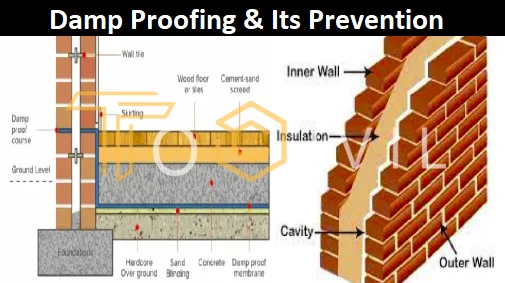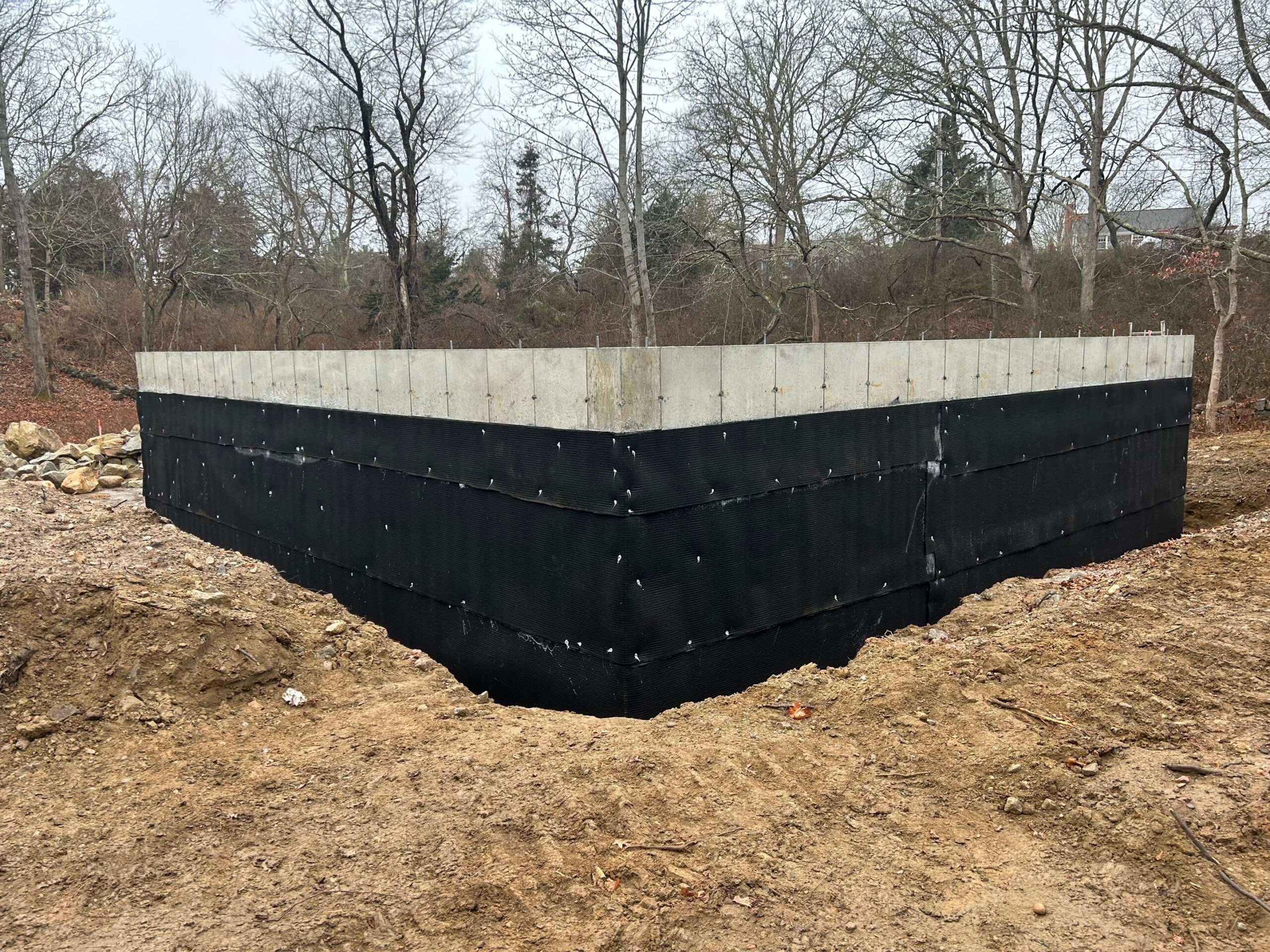Exploring the Numerous Strategies and Solutions for Effective Damp Proofing
Wetness in buildings poses significant challenges to both structural honesty and indoor air top quality. Numerous strategies and solutions have arised to combat this prevalent problem. From standard damp-proof membranes to innovative chemical treatments, each approach supplies one-of-a-kind benefits. Comprehending these choices is crucial for reliable moisture control. Nevertheless, selecting the best solution depends upon particular structure conditions and demands, prompting more exploration right into the most effective damp proofing techniques available.
Recognizing the Reasons For Wetness
Although dampness can develop from numerous sources, understanding these causes is essential for efficient remediation. Typically, wetness originates from three main resources: increasing wet, permeating damp, and condensation. Increasing damp occurs when groundwater travels up through permeable products, such as block or rock, commonly because of an absence of an effective barrier (damp specialist newcastle). Permeating wet is typically triggered by outside aspects, consisting of roofing system leaks, faulty seamless gutters, or harmed walls, enabling water to infiltrate a residential property. Condensation, on the various other hand, arises from excess moisture in the air, often aggravated by inadequate air flow and temperature level distinctions, resulting in water droplets basing on surfaces. Recognizing these underlying issues is essential, as each kind of dampness calls for a customized technique for remediation. Proper analysis assists in establishing one of the most reliable options, inevitably guarding the architectural stability of a building and boosting indoor air quality
Typical Damp-Proof Membrane Layers

Chemical Damp-Proofing Solutions
Chemical damp-proofing options use an ingenious strategy to avoid moisture breach in buildings. These techniques usually include the application of fluid chemicals that permeate stonework and create a barrier versus climbing damp. Commonly made use of chemicals consist of silanes, siloxanes, and other water-repellent representatives that react with surface materials to develop a hydrophobic layer.The application procedure typically needs drilling holes right into the wall surfaces, injecting the chemical solution, and enabling it to heal. This approach is especially useful for older frameworks where standard damp-proof membrane layers might be impractical. Chemical damp-proofing can be much less turbulent and much more affordable than extensive remodelling projects.While effective, these options depend on appropriate application and ecological conditions for peak performance. mould treatment newcastle. Routine maintenance and tracking are important to ensure the longevity of the damp-proofing therapy. On the whole, chemical damp-proofing represents a flexible choice for guarding buildings versus moisture-related damages
Cavity Wall Surface Building And Construction Techniques
Tooth cavity wall surface building techniques provide countless advantages, specifically in moisture control and power efficiency. By incorporating an air gap between two layers of stonework, these walls properly alleviate water access while boosting insulation. This mix not only safeguards structures from wetness but also adds to minimized power intake.
Advantages of Dental Caries Wall Surfaces
When taking into consideration effective damp proofing methods, the advantages of cavity wall surfaces attract attention prominently. Tooth cavity wall surfaces consist of two different layers, creating an air space that successfully reduces wetness penetration. This layout minimizes the threat of moisture, as the external wall acts as an obstacle against rainfall and water access. Furthermore, cavity wall surfaces improve thermal insulation, which contributes to power performance by decreasing warmth loss. They likewise offer sound insulation, aiding to create a quieter indoor atmosphere. The air space allows for air flow, which assists in dampness control and decreases the chance of mold development. These benefits not only enhance the general comfort of a structure but additionally add to its longevity and structural stability.
Moisture Control Techniques
Effective moisture control techniques are essential in cavity wall construction to guarantee long-lasting defense versus wetness. One primary method includes the consolidation of weep openings, which promote water drainage from the cavity, protecting against accumulation. In addition, using breathable membrane layers can assist handle moisture levels while allowing caught vapor to get away. Appropriate positioning of insulation is also crucial, as it ought to not obstruct water drainage paths. Making sure that the outer fallen leaves of the tooth cavity wall are built with water-resistant materials improves total durability. Normal maintenance checks are necessary to recognize any kind of obstructions or damage early, securing the framework's stability. Eventually, a combination of these methods creates a durable protection versus dampness intrusion in tooth cavity walls.
Insulation and Energy Effectiveness
Insulation plays a vital function in boosting energy efficiency within tooth cavity wall surface construction. By including insulating products, these wall surfaces develop a thermal obstacle that lessens warm loss and minimizes energy usage. Efficient insulation not only aids preserve a stable interior temperature however additionally alleviates the danger of moisture, as it stops condensation within the wall surface tooth cavity. Numerous techniques, such as making use of inflexible foam boards or mineral woollen, can be utilized to accomplish perfect insulation efficiency. Furthermore, appropriate setup is important to assure that spaces and gaps are reduced, which can or else endanger power performance. Eventually, a well-insulated cavity wall surface adds significantly to overall sustainability and decreases heating and air conditioning prices for home owners.
External Damp Proofing Approaches
External moist proofing approaches are important for safeguarding frameworks from dampness seepage. Two effective strategies consist of the application of waterproof membrane layers and the setup of French drains. These remedies help mitigate water accumulation and maintain the integrity of buildings.
Waterproof Membrane Layer Application
While different techniques exist for avoiding wetness access, the application of water-proof membranes continues to be a very reliable external damp proofing technique. These membranes are commonly made from materials such as polyethylene, rubber, or modified bitumen, offering a robust barrier against water infiltration. The setup procedure entails using the membrane to the outside surfaces of walls or foundations, ensuring complete coverage to protect against leaks. Appropriate adhesion and securing at joints are vital to taking full advantage of performance. Water resistant membrane layers can be used in different types, consisting of liquid coatings and sheet membrane layers, enabling for versatility based on the specific needs of the structure. This technique not only shields buildings from moisture however additionally enhances their longevity and architectural integrity.
French Drainpipe Installment
One effective method for handling groundwater and preventing dampness buildup around a structure's structure is the installation of a French drainpipe. This water drainage system is composed of a trench full of gravel and a perforated pipe that reroutes surface area water away from the structure. Appropriate setup calls for careful planning, making certain that the drainpipe inclines far from the framework to help with perfect water circulation. In addition, the area of the drain is vital; it should be positioned in locations vulnerable to pooling or excess wetness. Normal upkeep, consisting of clearing debris from the gravel and guaranteeing the pipeline continues to be unhampered, is essential for lasting performance. Inevitably, a well-installed French drainpipe can greatly decrease the danger of water-related issues in structures and cellars.
Inside Waterproofing Methods
Inside waterproofing methods are essential for shielding a structure's inside from dampness seepage and potential water damage. These strategies normally involve the application of specific materials and techniques designed to produce a wetness obstacle within the structure. One typical method is using waterproof finishes or sealants on walls and floors, which stop wetness from passing through surfaces.Additionally, mounting interior drainage systems, such as sump pumps, can effectively manage water accumulation in basements and crawl areas. An additional technique entails using vapor barriers, which are set up to inhibit wetness activity from the ground into living spaces.Moreover, attending to any type of cracks or gaps in walls or structures with proper sealers assures a complete protection against water breach. By executing these interior waterproofing approaches, homeowner can considerably minimize the threat of mold and mildew growth, structural damages, and various other moisture-related issues. Appropriate execution of these methods is important for lasting protection and structure honesty.
Regular Maintenance and Assessment Practices
Routine upkeep and assessment methods are crucial for ensuring the long-term efficiency of moist proofing remedies in any type of structure. Regular checks allow homeowner to identify very early indications of wetness intrusion, such as peeling paint, mold development, and mildewy odors. These signs can indicate underlying problems that require prompt attention.Inspections need to be carried out a minimum of yearly, concentrating on susceptible locations like basements, crawl spaces, and exterior walls. Throughout these analyses, homeowner ought to check out sealers, water drainage systems, and air flow to verify they work correctly.Additionally, preserving downspouts and rain gutters is necessary, as clogged damp proofing newcastle systems can result in water build-up near the foundation. Carrying out a routine upkeep schedule, along with prompt fixings, can significantly expand the life-span of damp proofing measures and shield the structural integrity of the structure. Proactive steps inevitably add to the total health and wellness of the living environment.
Frequently Asked Concerns
For How Long Does Damp Proofing Generally Last?
The duration of damp proofing performance varies, normally lasting in between 20 to 50 years. Factors such as application quality, environmental conditions, and maintenance methods significantly influence the durability of the damp proofing therapy.

Can I Damp Proof My Home Myself?
The private considered the usefulness of do it yourself damp proofing. With appropriate study and the ideal materials, it is possible. Nevertheless, they additionally identified the importance of specialist advice to ensure resilient performance and avoid future problems.
What Are the Indicators of Ineffective Damp Proofing?
Indicators of ineffective wet proofing include relentless musty odors, visible mold growth, peeling off paint, wet spots on wall surfaces, and wood degeneration - damp proofing newcastle. Home owners need to attend to these issues promptly to stop further damage and health concerns
Does Damp Proofing Affect Indoor Air High Quality?

Just How Much Does Specialist Damp Proofing Price?
Professional moist proofing costs vary substantially, usually varying from $1,000 to $5,000 depending on the property's dimension, the level of the damp problem, and selected techniques. Each situation calls for a tailored assessment for exact rates. Typically, dampness originates from 3 main sources: climbing moist, penetrating wet, and condensation. When taking into consideration reliable wet proofing techniques, the advantages of tooth cavity walls stand out prominently. Outside moist proofing approaches are crucial for securing structures from moisture seepage. While different methods exist for preventing wetness access, the application of water-proof membrane layers remains a very reliable exterior wet proofing technique. Indications of inadequate damp proofing consist of persistent mildewy odors, noticeable mold development, peeling paint, wet patches on walls, and wood decay.